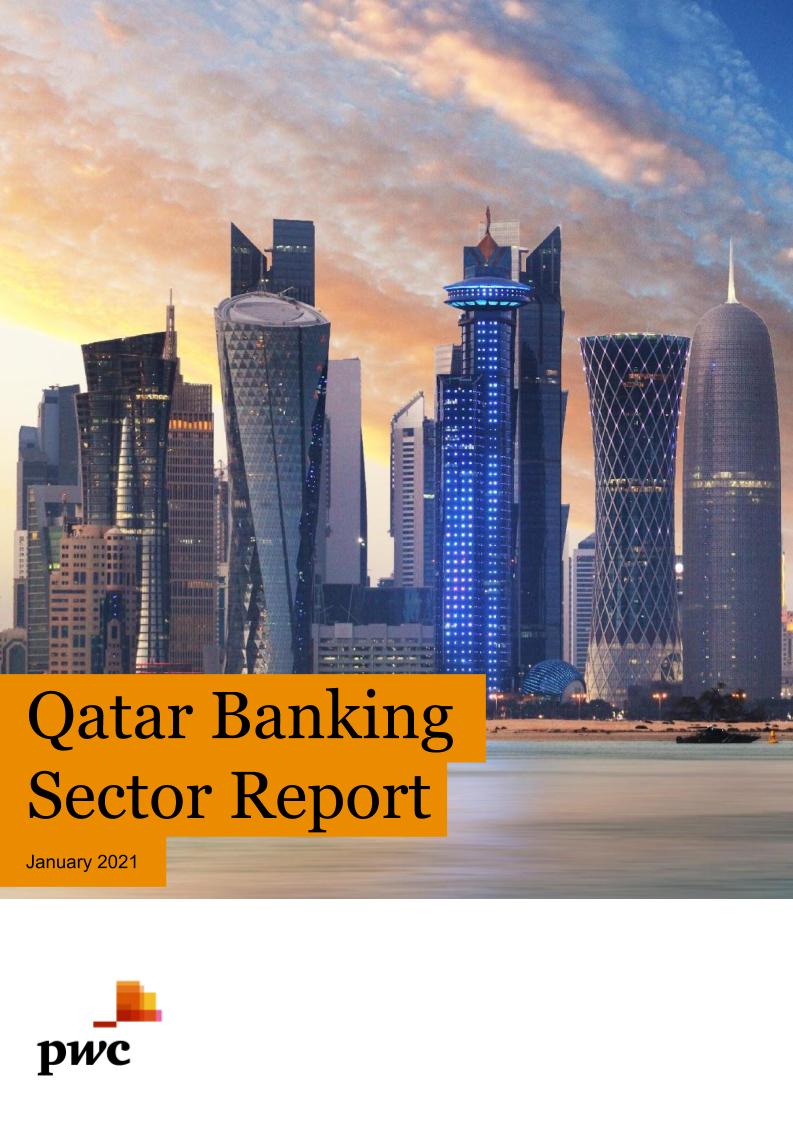2020 Q3 Qatar Banking Sector report - January 2021
As business communities prepare for expected economic recoveries, the financial service industry is operating on low interest rates and experiencing tighter profitability. Financial institutions are expediting transformation programmes to build the ‘financial institutions of the future’, aimed at gaining cost efficiencies and increasing lending activities by reaching out to new customer segments. As the rise of provisions and efficiency ratios is adding pressure on margins, the industry is facing the challenge of balancing cost cutting and investment through the execution of these programmes.
As the emergency measures taken in H1 2020 have been gradually lifted, financial institutions now have the capacity to accelerate transformation programmes; also in light of recent lessons learned. The upcoming six months will offer the rare opportunity to embrace change at an unprecedented pace with both corporations and customers. To design the financial institutions of the future, there are four key priorities to focus on:
- Reconfigure the operating model by digitising end-to-end processes, discontinuing non essential activities typically characterised by a low ROI, and evaluating economic advantages of outsourcing parts of the value chain. Financial institutions have designed cost optimisation programmes and implemented collection approaches which show new and successful ways to operate. Reconfiguration programmes require investments to redesign operations to the new optimum, with short payback periods averaging between 1 to 3 years.
- Rebuild the revenue growth engine by transforming the business to a customer acquisition model. Customers across age groups are increasingly becoming digitally savvy and decreasing their reliance on branch banking. In this context, digital customer acquisitions have become a priority for the majority of international financial institutions. The omnichannel strategy integrates traditional branches with digital, requiring digital-savvy human capital, online branding activities, and the integration of data analytics/sentiment analysis into current processes and data management.
- Improve risk management practices by using new methods for assessing credit worthiness and performing KYC and KYB processes. In this space, FinTechs are pioneering e-KYC across the globe, while Credit Bureaus are offering advanced solutions to financial institutions, such as extended KYC & KYB solutions and also EDD on customers through open banking solutions.
- Enhance compliance practices and internal controls by accelerating digitisation and automation of processes. For example, RegTech software has been implemented by several financial institutions in the Middle East, to facilitate compliance functions in integrating new regulations issued worldwide and assess the ramification of regulatory updates on the operating model.
In the first nine months of 2020 (Q3 2020), the aggregated total assets of the 8 listed commercial banks grew 3.7% to hit QAR 1.69 Tn, while the aggregated loans and advances to customers grew 4.5% to reach QAR 1.17 Tn, showing a steady growth in 2020 despite the challenges faced during the volatile period.
The Qatar banking sector is embracing change, and evidence can be found in the Q3 2020 financials. This edition of the ‘Q3 2020 Qatar Banking Sector Report’ covering 8 listed commercial banks, shows that banks steadily grew their lending activity, accelerating the pace of expansion by diversifying the source of funding through a double-digit growth of debt securities and Sukuk financing. Profits and profitability are under pressure due to the joint effect of provisions and non-interest expenses over revenues.
This positive growth experienced in Q3 2020 has been accelerating between 30 June and 30 September 2020, when the aggregated total assets of the 8 listed commercial banks increased the pace of growth by 1.8%, compared to 0.13% growth between June and March 2020. Similarly, the aggregated loans and advances to customers grew 2.4% in the three months between 30 June and 30 September 2020, compared to a contraction of -1.2% registered between June and March 2020.
In terms of source of funding, the rapid growth in assets (QAR +29 Bn vs H1) and aggregated loans and advances (QAR +27 Bn vs H1 2020) is reflected in the growth of Equity, up by QAR 5.1 Bn to QAR 187.7 Bn (+2.8% vs H1 2020) and total liabilities, up by QAR 24.3 Bn to QAR 1.497 Tn (+1.6% vs H1 2020).
When further breaking down the total liabilities of the 8 listed commercial banks between June and September 2020, it is noticeable that banks have been increasing their funding through issuing debt securities and Sukuk, which recorded a double-digit growth. In the last three months, debt securities and Sukuk financing combined grew QAR +9 Bn (+28.2% vs FY 2019 and +11.4% vs H1 2020), while customer deposit increased by QAR +7.6 Bn (+3.1% vs FY 2019 and +0.7% vs H1 2020) and due to banks is up QAR by +5.3Bn (+0.14% vs FY 2019, 2.9% vs H1 2020). Deposit growth was partially slowed down by a decrease in Qatar’s population, which has been reported to be down -90.886 to 2.715.919 in November 2020 (vs 2.807.805 in May 2020) by the Qatar Planning and Statistics Authority.
The other main assets categories registered one-digit growth; the aggregated cash and balances with the Central Bank of the 8 listed commercial banks grew 0.9% between June and September 2020, while due from banks increased 5.2% in the same period. The small growth of cash and balances with the Central Bank is interpreted as a sign of confidence in the real economy, as the banks preferred lending through loans and advances (+2.4% vs H1 2020) rather than maintaining liquidity in the safer cash and balances with the Central Bank account.
With regards to income statements, total profits of the 8 listed commercial banks reached QAR 17.1 Bn, decreasing 10.9% compared to Q3 2019. Profits remained under pressure due to an intensification of the aggregated provisions in the nine months of 2020 (+13.2% vs FY 2019). However, between June and September 2020, provisions only recorded a smaller growth (+2.7% vs H1 2020), evidencing the ability of the 8 listed commercial banks to substantially control provisions in the last quarter. Consistently, the increment of the aggregated provisions to total loans and advances ratio remained unchanged (3.09% in Q3 2020 vs 3.08% in H1 2020). Profitability was also impacted by non-interest expenses. In fact, the 8 listed commercial banks have taken action in containing the aggregated non-interest expenses (staff costs, depreciation, amortizations and other expenses), which decreased by -28% vs FY 2019 to hit QAR 8.3Bn. However, the efficiency ratio (non-interest expenses over revenues) registered an increase of 1.22PP, showing that non-interest expenses have proportionally increased their impact on profitability.

Financial institutions expedite transformation programmes to build the ‘financial institution of the future’
It is noticeable that banks have been increasing their funding through issuing debt securities and Sukuk, which recorded a double-digit growth
Contact us


Ahmed AlKiswani
Partner, Regional Financial Services Leader, PwC Middle East
Tel: +97450098446









